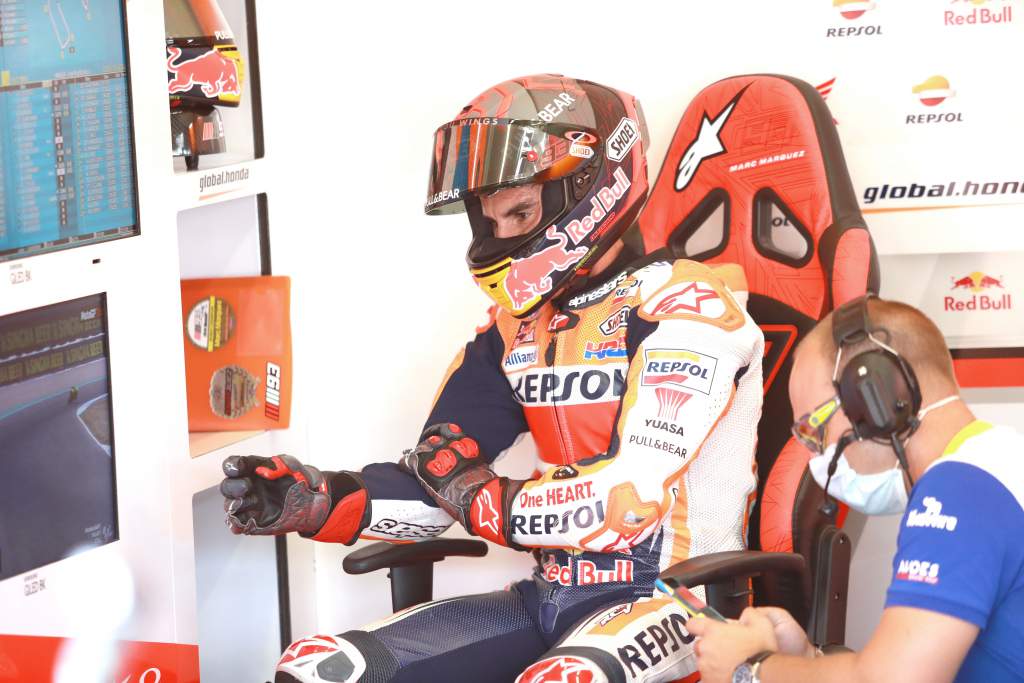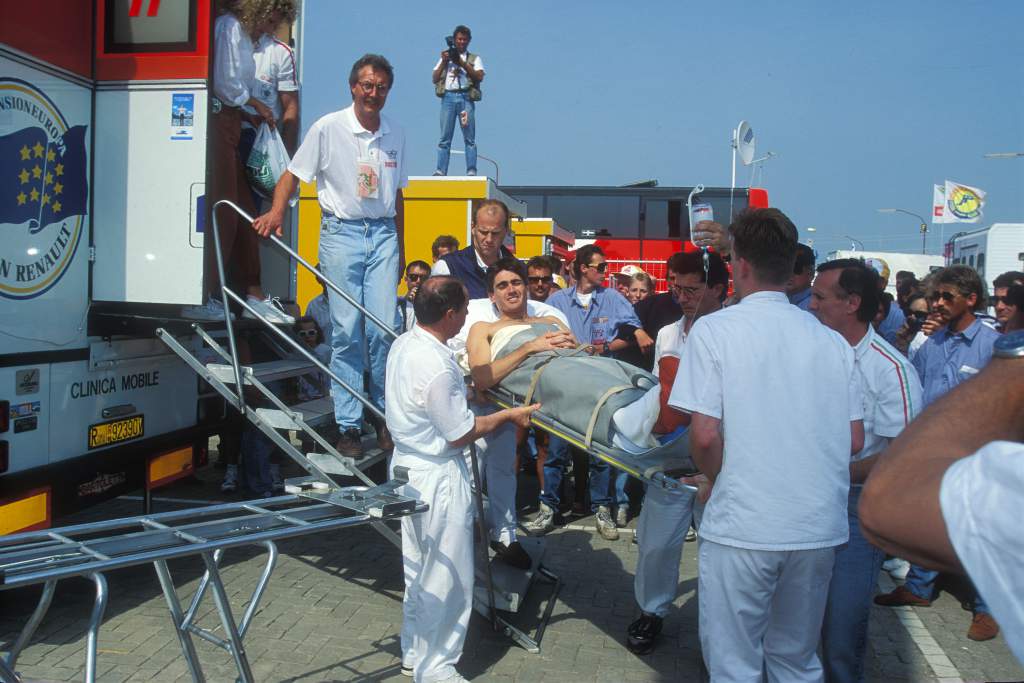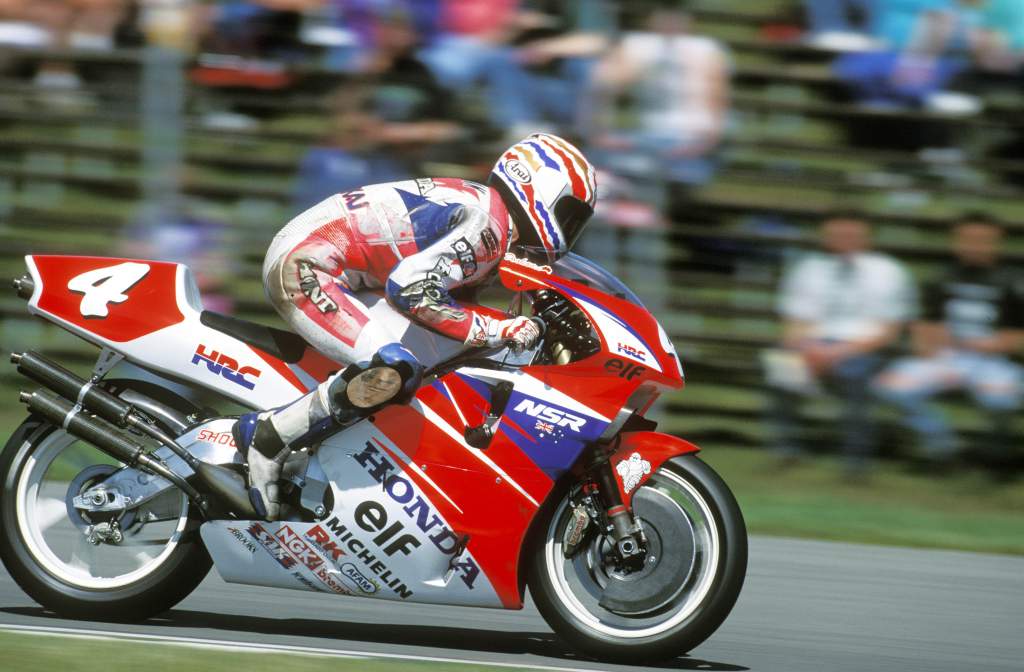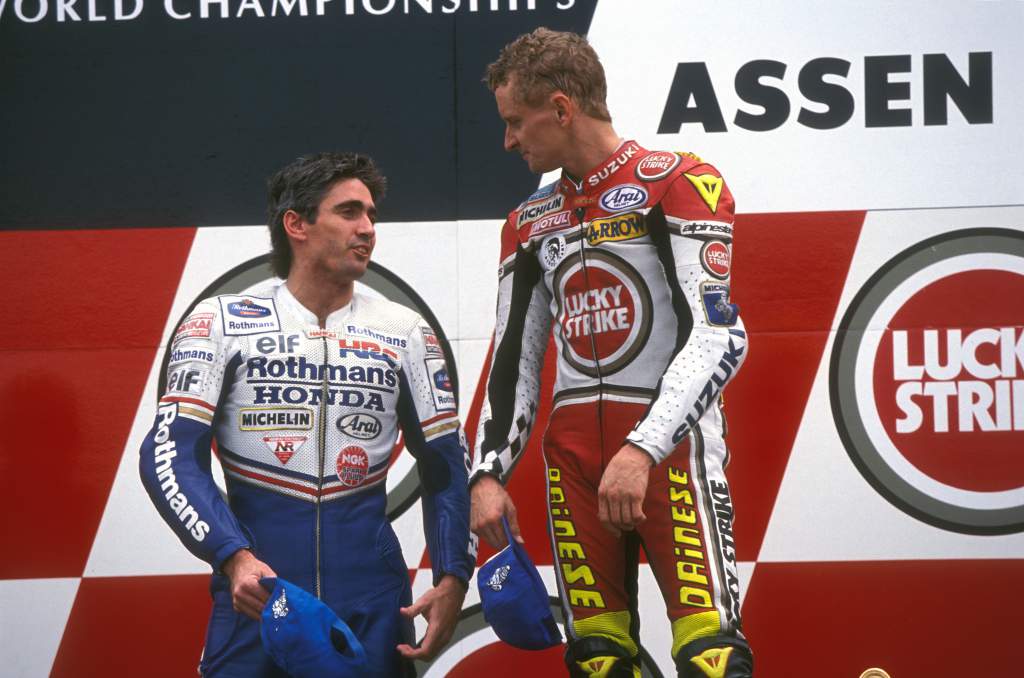As Marc Marquez prepares to make his racing return at Portimao, it’s been quite the recovery after a pretty extensive medical procedure.
The final surgery to repair his arm, carried out last December, involved chiseling a chunk of bone out of his pelvis and then transplanting it to his arm, using the graft as a bridge to help encourage the bone to regrow.
Marquez thankfully avoided any nerve damage in the crash. That’s a common complication of humerus breaks thanks to its proximity to the very important radial nerve.
He still didn’t have an easy time though, contracting an infection in the bone and spending 10 days in hospital being administered intravenous antibiotics to prevent the graft from being rejected.

However, while the procedure he underwent might sound more like something performed by a 16th century barbershop surgeon than a world-class orthopaedic medical team, it pales in significance to the horror show inflicted upon Repsol Honda’s previous unbeatable superstar in the 1990s.
Australian Mick Doohan was at a different stage of his career when he suffered an accident that was almost life-changing, crashing in qualifying for the 1992 Dutch TT after winning five of the opening seven races of the season and looking set to not just pick up his first title but to absolutely dominate the year.
Badly breaking his right tibia after crashing at Turn 1 on fluid dropped by another rider, Doohan immediately underwent surgery the same day to have the bone bolted back together as he saw a chance for a speedy recovery and an opportunity to maintain his 53-point lead over second-placed man Kevin Schwantz.
But things went immediately wrong. Developing compartment syndrome – the acute and serious version of what riders normally refer to as arm pump – in the leg, he was rushed back into operating theatre to have the pressure build-up relieved by essentially opening him from ankle to knee front and back.
With Doohan showing the early signs of sepsis and losing blood, and with local Dutch doctors keen to take what they believed to be the only course of action – amputation – MotoGP’s legendary medical director Doctor Claudio Costa sprung into action at once.

Breaking Doohan out of hospital (not the first nor the last time Costa organised an escape) and getting him onto an air ambulance, Costa flew the Australian to his own clinic in Italy. There, as the wound failed to respond to treatment, he suggested a radical course of action to save it: sewing his legs together.
Using the blood supply from Doohan’s healthy left leg to support the injured one until it could begin to heal, he essentially turned the 27 year-old into MotoGP’s first merman with the antiquated procedure.
But, while Costa might have been unconventional, he was no fool, and after 14 days he was able to operate again to separate the limbs and allow Doohan to begin his rehabilitation. It worked too, with the Australian able to return to action at Interlagos only eight weeks after the Assen crash.
The title wasn’t to be, though. Still maintaining a small lead over new challenger Wayne Rainey, Doohan managed 12th in Brazil and sixth at the final round of the year at South Africa’s Kyalami – but a win and a third for the American gave Rainey the title by four points.
Doohan’s career-threatening crash came at the very beginning of his success. Recovering from the injuries throughout 1993, he was unleashed in 1994, taking a podium in each of the season’s 14 races.

This was the first of five consecutive titles until Doohan crashed in a wet session at Jerez in 1999 and broke the same leg again.
But while he and Marquez might be at different places in their respective careers, there’s lots to take from Doohan’s story that applies to Marquez. For one, there’s the obvious lesson: if anyone thinks that worrying about another crash will slow Marquez down, then Doohan’s story should show more than anything just how the brain of a racer works.
But it also shows that horrific injuries, especially those sustained when riders are still young and healthy (both got hurt at 27 years old), do not spell a death sentence for a career. It’s all but a given that Marquez will come back strong – and really, the only limiting factor will be how long it takes him to regain his mental focus after so long off the bike.
Because while his physical recovery and rehabilitation might be coming along nicely – successfully enough that he’s ready to race – it’ll take longer to get his brain up to speed, as Doohan’s former rival Schwantz explained to The Race last year.
“I was always convinced that after the time I took off, it took me twice as long to come back again, and I never missed an entire season,” Schwantz said.
“If I was off for a month, I knew I needed to come back as soon as I could even if I wasn’t 100% physically, because I would need to get my head back to speed.
“The worst-case scenario is that you get back on that fucker, you’re 100% fit, you’re thinking ‘I’ve crashed my mountain bike, I’ve crashed my first bike, I am ready!’ – then you get back on it and you’re halfway through a day of testing asking yourself ‘why am I two fucking seconds off?’
“Your brain isn’t acclimatised to 220mph, and it takes time to get your depth perception and your sense of speed working; you almost have to relearn it all.”

Should that be the case, Marquez is at least aided somewhat by the 2021 calendar’s return to normality compared to the ultra-compressed schedule of 12 months ago.
He’s also been back on a MotoGP bike already (albeit a production version of his 2017 machine), and while his laptimes from testing in Barcelona and Portimao haven’t been publicly released, they will have informed his decision to return after missing only two more races.
And the thing is, given his incredible success over the past eight years since winning the title as a rookie, it’s hard to ever bet against him. He’s broken record after record over the years, and while ‘fastest ever return to winning’ isn’t one most riders would aim for, it’ll come as no surprise if it’s simply the latest milestone he racks up.





